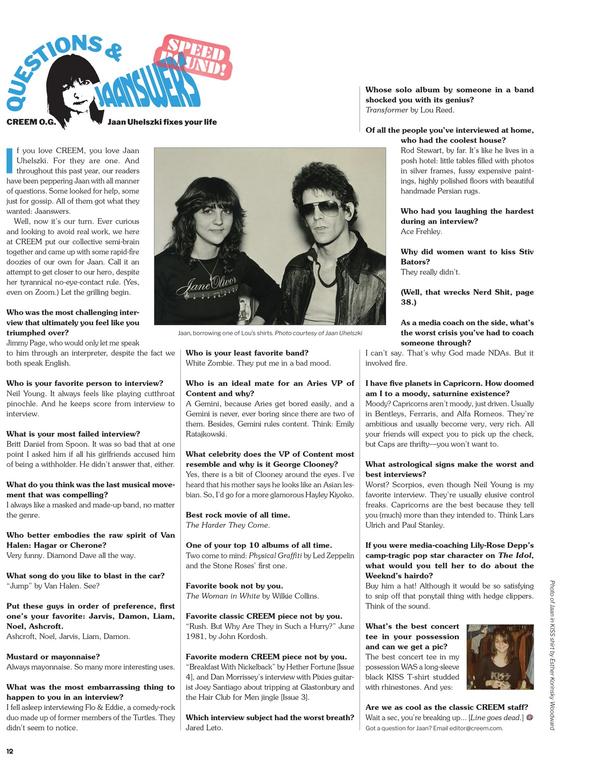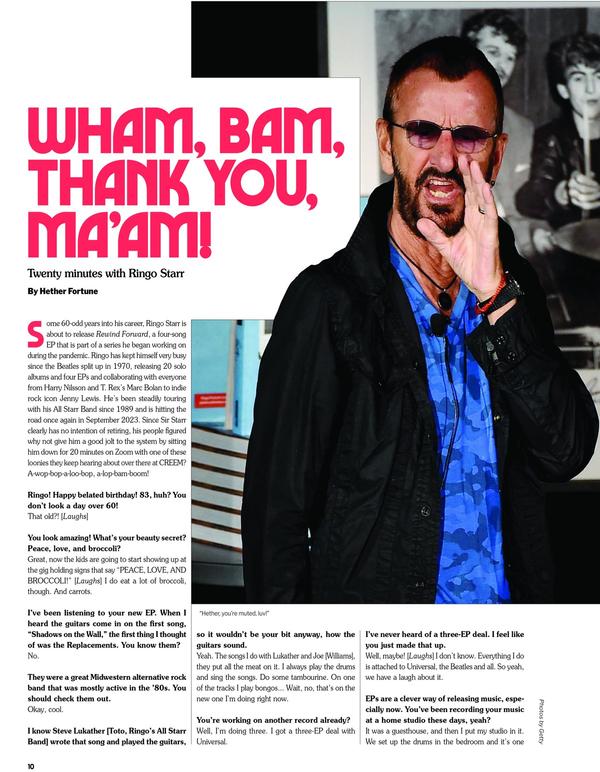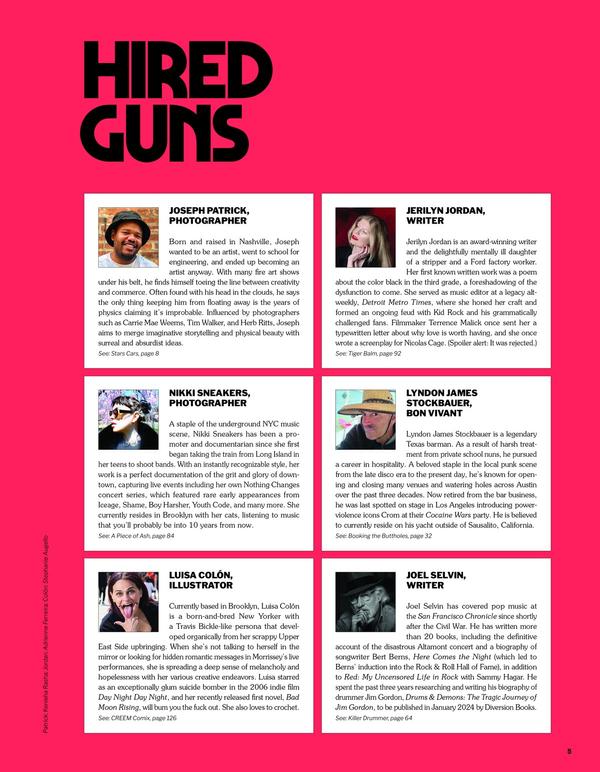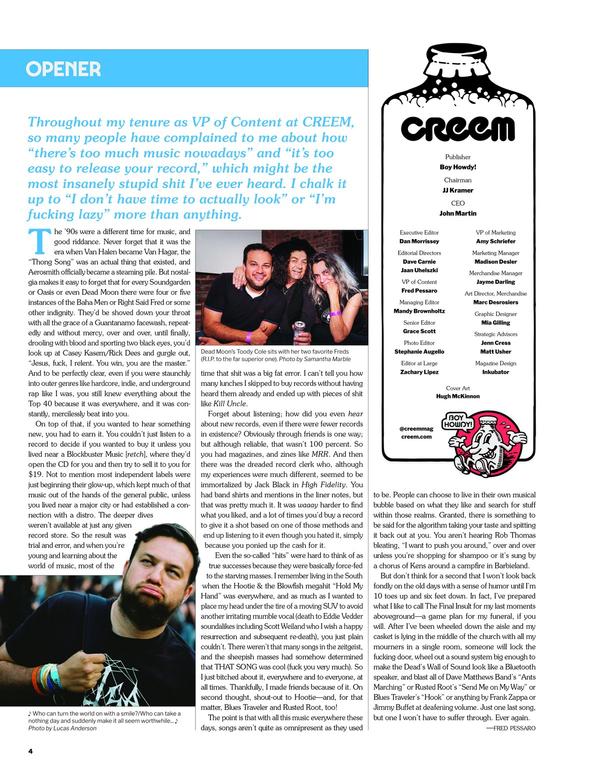Dusty Fingers
The Spaces Between
Music brainiac Brian Turner reveals a rare and fantastic record from his secret stash—hey, quit drooling on the magazine!

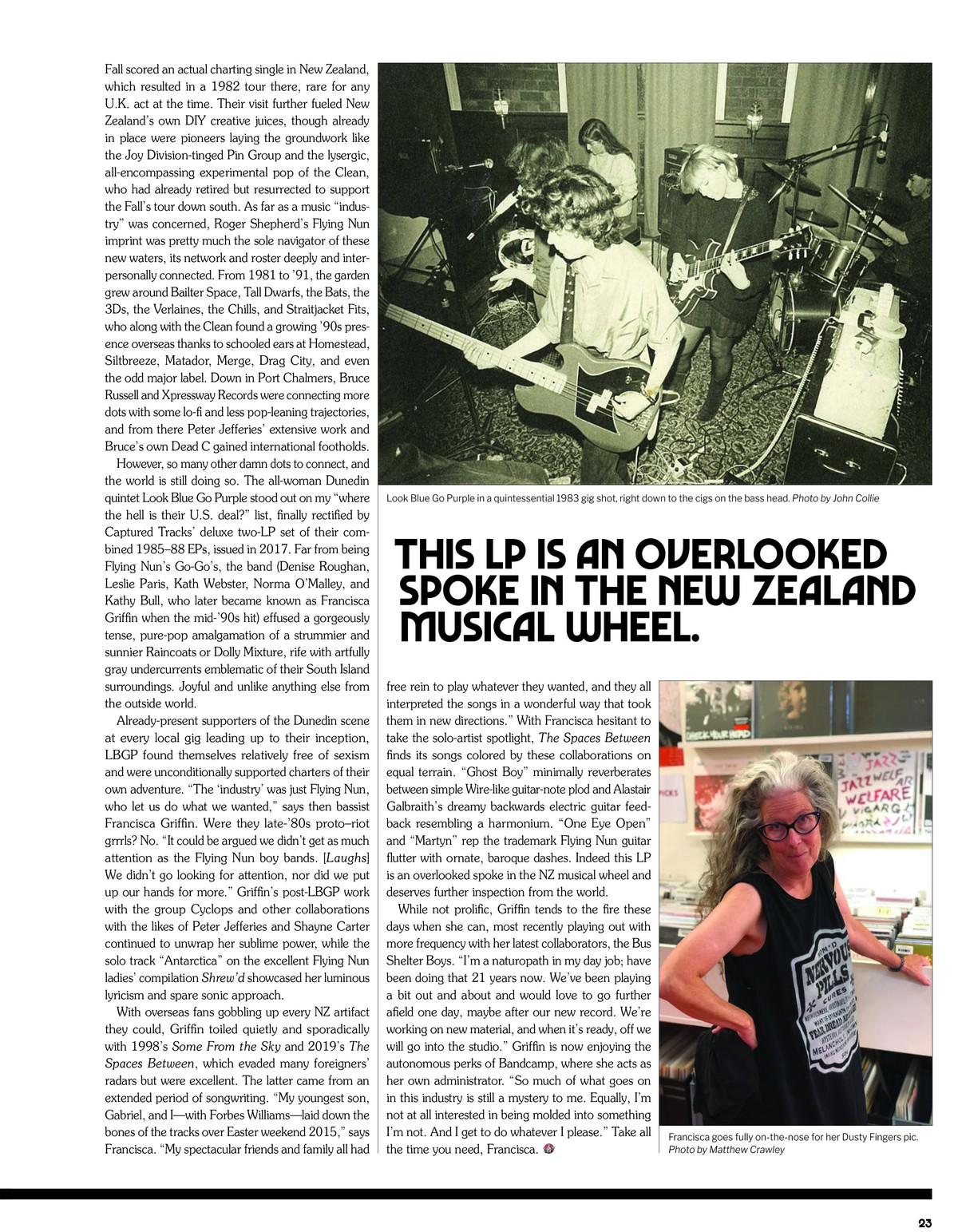
When Francisca Griffin’s 2016 LP The Spaces Between fell into my hands via a handoff from a friend visiting her in Dunedin, New Zealand, I quickly realized it was an essential missing piece of what I thought was a full grasp of the multitiered mass of classic releases I had virtually inhaled through my decades of fandom for the country. Why hadn’t I heard this yet? What other rocks needed to be overturned? I guess first some historical context in how we got to this place.
In the pre-internet days of the ’80s/early ’90s, New Zealand was a musical Machu Picchu of sorts: not easily accessible to the world, discussed by word of mouth (i.e., fanzines), and overflowing with bounty for those willing to do the legwork and tap in to access a cultural movement provided by its tight-knit inhabitants. That is not to say it was cut off from the outside world’s information, though, quite the opposite. Punk’s advent impacted the islands in a heady way in the very late ’70s, but also the ripples of DIY and post-punk from the U.K. in particular sparked a surge of activity in the artist-friendly big cities of Auckland, Wellington, and Christchurch, as well as lesser-known locales such as the South Island's Dunedin and Port Chalmers. An influx of imports from the Rough Trade crew (Swell Maps, Cabaret Voltaire, the Slits, the Raincoats) seeded the notion of a musical ecosystem where labels didn’t have control, large studio budgets were unnecessary, and academic prowess on instruments was unneeded. The Fall scored an actual charting single in New Zealand, which resulted in a 1982 tour there, rare for any U.K. act at the time. Their visit further fueled New Zealand’s own DIY creative juices, though already in place were pioneers laying the groundwork like the Joy Division-tinged Pin Group and the lysergic, all-encompassing experimental pop of the Clean, who had already retired but resurrected to support the Fall’s tour down south. As far as a music “industry” was concerned, Roger Shepherd’s Flying Nun imprint was pretty much the sole navigator of these new waters, its network and roster deeply and interpersonally connected. From 1981 to ’91, the garden grew around Bailter Space, Tall Dwarfs, the Bats, the 3Ds, the Verlaines, the Chills, and Straitjacket Fits, who along with the Clean found a growing ’90s presence overseas thanks to schooled ears at Homestead, Siltbreeze, Matador, Merge, Drag City, and even the odd major label. Down in Port Chalmers, Bruce Russell and Xpressway Records were connecting more dots with some lo-fi and less pop-leaning trajectories, and from there Peter Jefferies’ extensive work and Bruce’s own Dead C gained international footholds.


